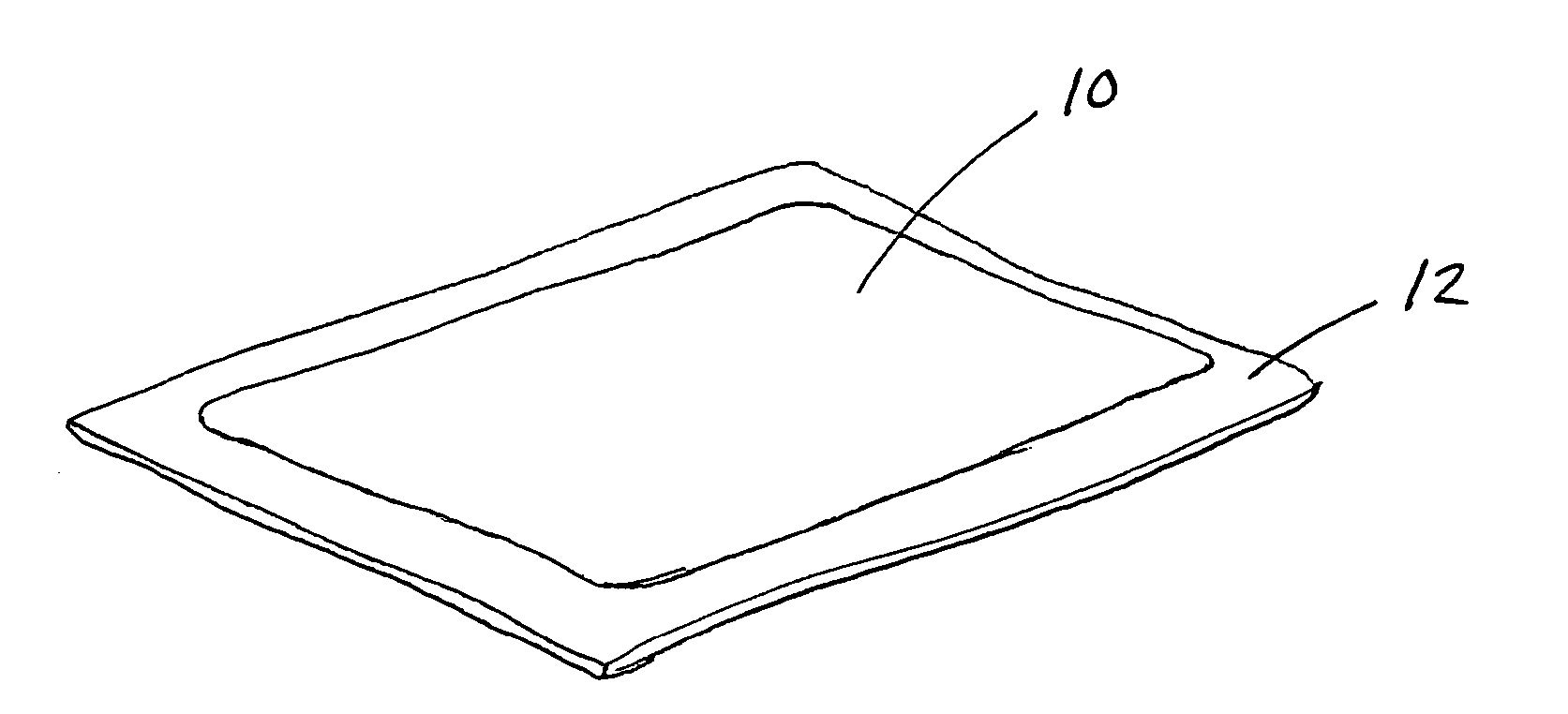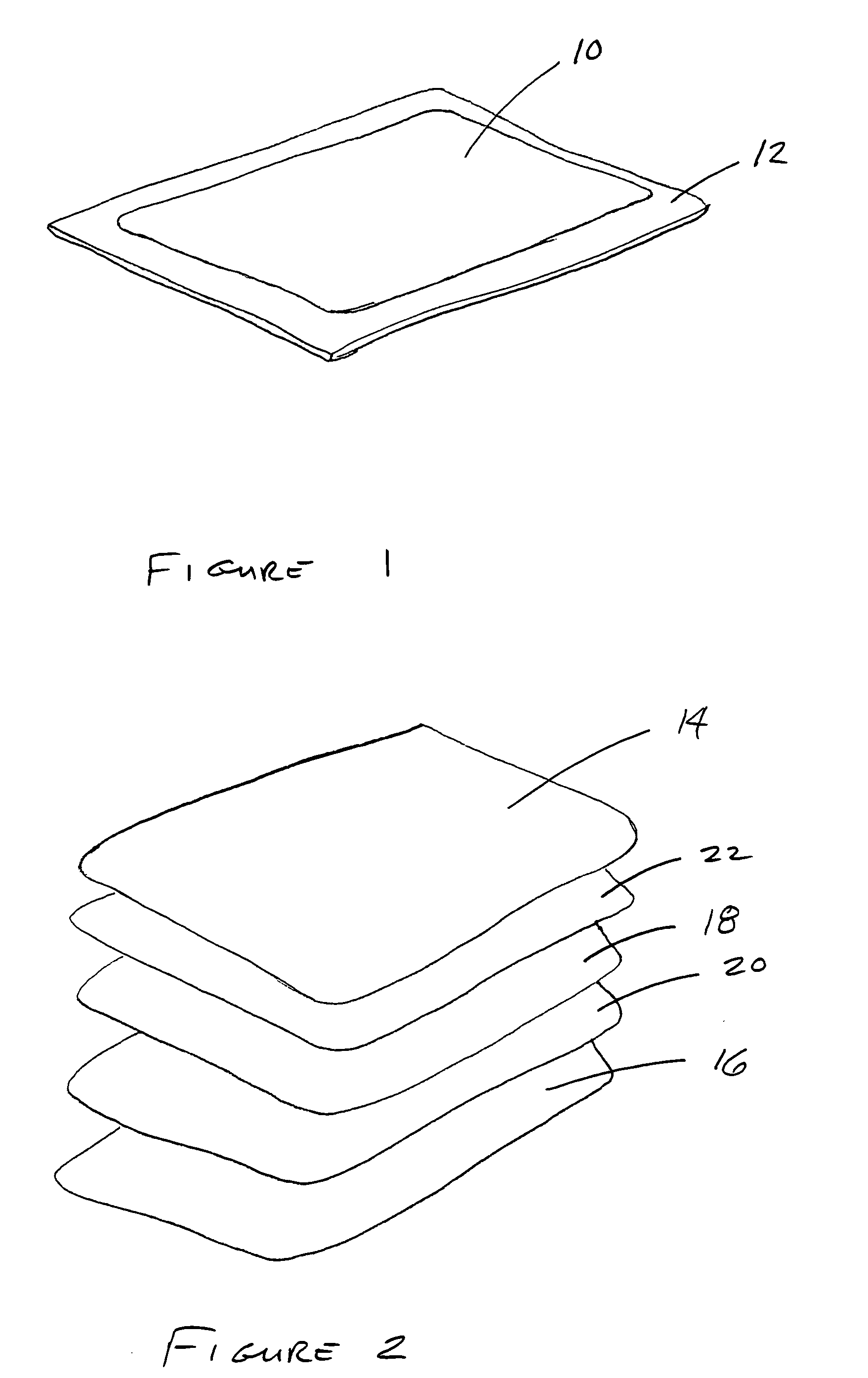Hydrogel having anti-microbial properties
a technology of anti-microbial properties and hydrogels, which is applied in the field of hydrogels, can solve the problems of prolonged inflammation, dermatitis, rash and/or other forms of skin irritation, and unpleasant odor of body fluids
- Summary
- Abstract
- Description
- Claims
- Application Information
AI Technical Summary
Benefits of technology
Problems solved by technology
Method used
Image
Examples
Embodiment Construction
[0016] The present invention is directed to a method of making a hydrogel that has anti-microbial properties. The method includes mixing a hydrogel-forming polymer, such as a hydrophilic polymer, with water and cross-linking the polymer and water using an energy source. The method does not require use of any chemical additive to affect the cross-linking. As such, the methods of the present invention are more efficient and / or cost-effective because there is no need for a chemical additive to enhance cross-linking as with prior art methods. In addition, the hydrogel materials may include an anti-microbial agent.
[0017] In a first aspect, the present invention provides a method of making a hydrogel wherein a hydrogel-forming polymer is mixed with water. In one embodiment, the hydrogel-forming polymer is a hydrophilic polymer. The hydrogel-forming polymer may be mixed with water in a wide range of ratios. The hydrogel-forming polymer may be mixed with water in a ratio range of from abou...
PUM
 Login to View More
Login to View More Abstract
Description
Claims
Application Information
 Login to View More
Login to View More - R&D
- Intellectual Property
- Life Sciences
- Materials
- Tech Scout
- Unparalleled Data Quality
- Higher Quality Content
- 60% Fewer Hallucinations
Browse by: Latest US Patents, China's latest patents, Technical Efficacy Thesaurus, Application Domain, Technology Topic, Popular Technical Reports.
© 2025 PatSnap. All rights reserved.Legal|Privacy policy|Modern Slavery Act Transparency Statement|Sitemap|About US| Contact US: help@patsnap.com


